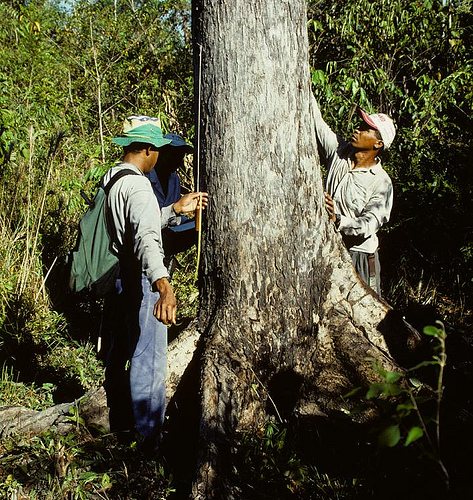Lee Township is a small community tucked into Michigan’s southwest corner in the rural area between Grand Rapids, Kalamazoo and Lake Michigan.
On Tuesday, Aug. 16, the township officially broke ground on a new fire station – though construction work has already begun. The project was made possible by a $400,000 loan and $50,000 grant from Rural Development funded by the American Recovery and Reinvestment Act. Total project cost is $1,068,500 with Lee Township contributing $618,500.
Township Supervisor Steve Miller presided at the brief ceremony which included state Rep. Bob Genetski, and remarked that it was the biggest thing to happen in the township. Read more »
District of Columbia science classes help in an enhanced pest detection program.
The Challenge – Non-native wood-boring insects and pathogens that infest and kill trees pose a serious threat to our nation’s forests.
But monitoring trees to look for emerging insects is time-consuming and resource intensive. Exotic pests are frequently first introduced in the country’s urban areas where they go undetected until they are well established and have damaged host trees. Enhanced survey and detection methods are needed to identify new introductions of invasive insects and diseases. Read more »

Left – Right, President of the Village of Kwigillingok, Johnny Friend, joins Tasha Deardorff, Matt Dixon, Jonathan Adelstein and Jim Nordlund at a site where RAVG funded a flush, tank and haul upgrade for a village home.
In what was some of the most beautiful weather Southwest Alaska had seen recently, USDA Administrator Jonathan Adelstein joined the USDA-Rural Development Alaska team to tour several rural communities including Manokotak, New Stuyahok, Kasigluk and Kwigillingok and Pitkas Point. The site tours were part of viewing Rural Alaska Village Grant (RAVG) program projects USDA helped fund over the past few years. Read more »

Forest Service field ecologist Jimmy Grogan at the Marajoara field site in southeast Pará, Brazil. The ‘sororoca’ plant with the wide leaves is a relative of the banana. Although the photo was taken in the daytime, the light is low because the researchers are in the forest understory. Photo by M. Loveless
I have lived and worked abroad for most of my adult life, including many years in Indonesia, Thailand, and Malaysia, so it was not too difficult adjusting to life in the Brazilian Amazon. I learned to speak Portuguese in the field; my tutors were the field assistants that I hired locally. The politics of doing research on this species are challenging and complicated. That side of my research has been almost as educational and fascinating as the actual fieldwork. Read more »

Field assistants measure mahogany tree diameter near the agricultural town of Agua Azul in southeast Pará, Brazil. Photo by J. Grogan
This post is part of the Science Tuesday feature series on the USDA blog. Check back each week as we showcase stories and news from the USDA’s rich science and research portfolio.
The very name mahogany is synonymous with luxury and sophistication. This beautiful wood has been traded internationally since the Spanish discovered natural forests around 1500 during colonization of Mexico and Central America. Mahogany is more than a pretty plank – its strength, light weight, resistance to rot, and structural stability made it an ideal timber for ocean-going vessels as well as furniture. Mahogany also occupies an important position in the ecosystem insofar as it is a large tree that emerges above the forest canopy. Many other species depend on it for habitat and survival. Read more »
A day in the life of a U.S. Department of Agriculture photojournalist is never the same. This one was no exception.
It started out testing a new memory card that transmits photos from a digital camera to our Flickr social media gallery (www.USDA.gov and click the Flickr link). After making the card work in the office , a field test was in order.

Sunflowers in the People's Garden at the Department of Agriculture, in Washington, DC. USDA Photo by Lance Cheung.
Read more »




